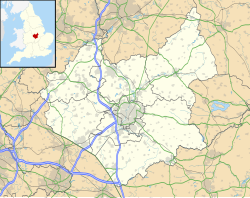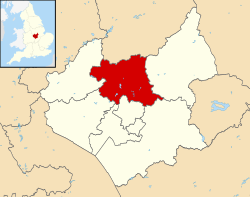This article needs additional citations for verification .(August 2019) |
| Hathern | |
|---|---|
 St Peter & St Paul Church, Hathern | |
Location within Leicestershire | |
| Population | 1,866 (2011) |
| District | |
| Shire county | |
| Region | |
| Country | England |
| Sovereign state | United Kingdom |
| Post town | Loughborough |
| Postcode district | LE12 |
| Dialling code | 01509 |
| Police | Leicestershire |
| Fire | Leicestershire |
| Ambulance | East Midlands |
| UK Parliament | |
Hathern is a village and civil parish in the Charnwood district of Leicestershire, England. The village itself is located in the north of the district, and is just north of Loughborough. It is served by the A6. The parish has a population of about 1,800. Nearby places are Dishley, Long Whatton, and Zouch, over the border in Nottinghamshire. Residents of the village have, in recent years, campaigned to prevent the green "wedge" separating Loughborough, Shepshed and Hathern from being built on. [1] The village is home to the Swift Sock Factory, one of only a small number of independent sock manufacturers left in the UK. [2]
Contents


